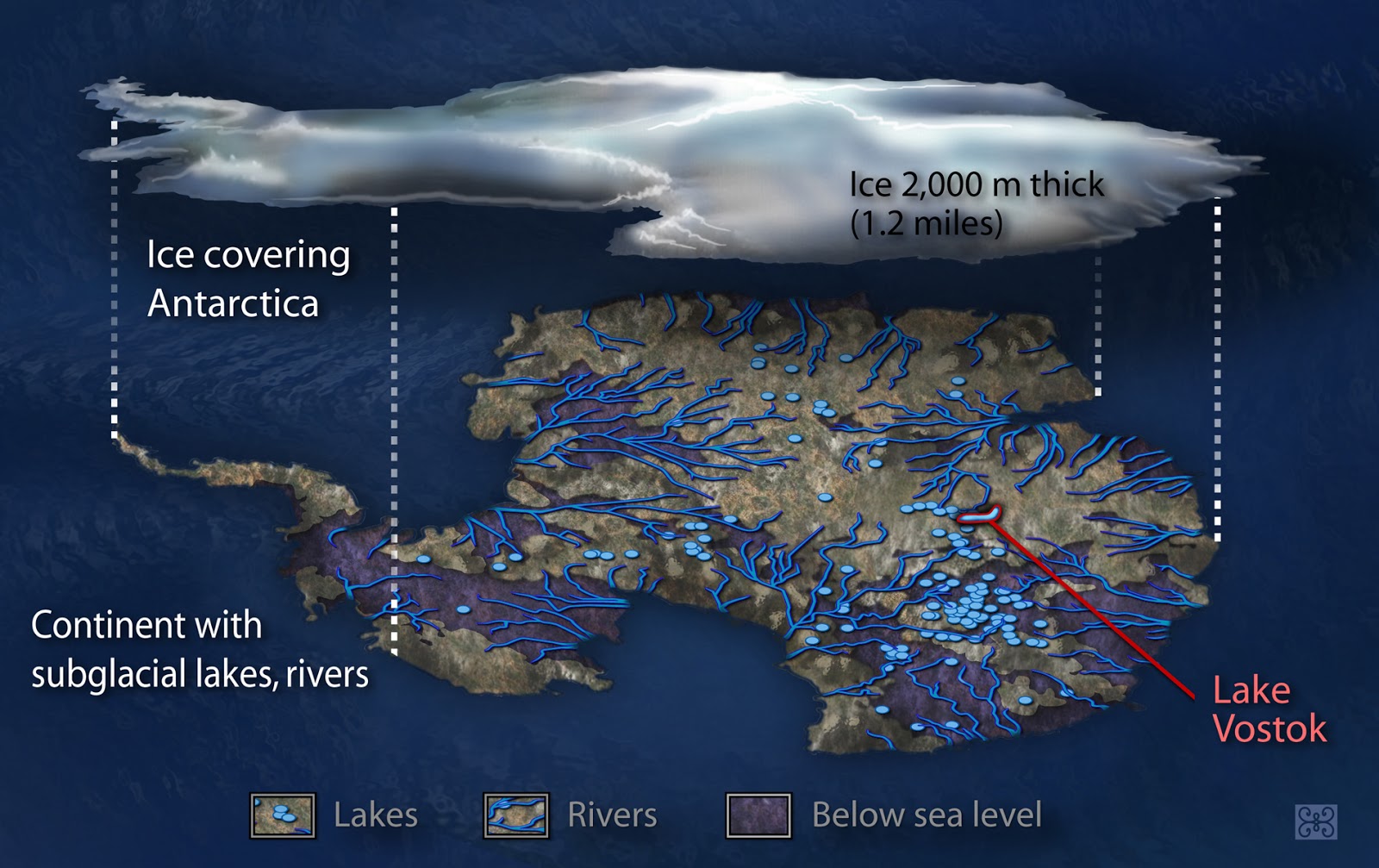Antarctica is known to be one of the windiest, driest,
coldest and darkest places on earth. Antarctica is covered by ice an also
considered a dessert. The large continent full of ice contains a lot of fresh
water. But it wasn’t always that way; Antarctica was a tropical place 15
million years ago. But the planet had a
dramatic climate change.
This
picture shows that there is land under all the snow
The winds play a big roll on why Antarctica is so cold. This
happens because Antarctica is colder than the water surrounding it. This causes
a high pressure of air to travel away from Antarctica and pushes it to a warmer
region. With the help of the carioles force the winds start to go
counterclockwise with a high pressure in the Southern hemisphere. This helps the
current winds run in a pattern and helps to create a Vortex. The vortex spreads
from the surface to the stratosphere creating a barrier. The barrier of the
winds helps keep the warm air away. But what also really helps the cold wind is
the sloping terrain around Antarctica; it rises from 9,000 to 13,000 above the
sea level. Along the sloping terrain the colder air starts in the surface and
the warmer air stays at the top causing a katabatic wind; this means the colder
air stays adjacent to the cold air. Therefor helping Antarctica keep a cool
weather no matter what the season is.
This
shows how the cold air and warm air interact
These cold winds are predicted to turn warm in the
future. This warmth is going to be
caused by greenhouse gases; causing Antarctica to warm up. It is said that the greenhouse
gases has caused the winds to shift’ the shift of winds has warmed the
peninsula in Antarctica. This has first been seen in 2002 when the winds
shifted and warmed Antarctica’s peninsula. The warmth of Antarctica’s peninsula
spread towards south America causing an ice shelf called “Larsen B” to detach
from Antarctica.
In 1000 years I believe that greenhouse gases will start to
increase; causing the warmth of Antarctica to increase with it. This will cause
channels to open between the ices, causing some glaciers to split.
(“New Scientist" websites pictures, shows and also believe
that channels will form through the ice in 1000 years)
In 10000 still believe that ice caps will continue to melt
due to the fact that in 10000 years the human race will have polluted every
inch of this earth. The greenhouse gases will increase into a dangers
level. By this time Antarctica will
start showing a land and we will start to see trees starting to grow and new
animals starting to migrate.
1000000 from now Antarctica will be a tropical forest. It
will no longer be a cold dark windy place. New species will be calling Antarctica
their home. Antarctica will be a jungle full of life and will be one of the few
places left with any vegetation.
This video shows a prediction of what Antarctica might look
like in 10 million years from now
Work sited page






